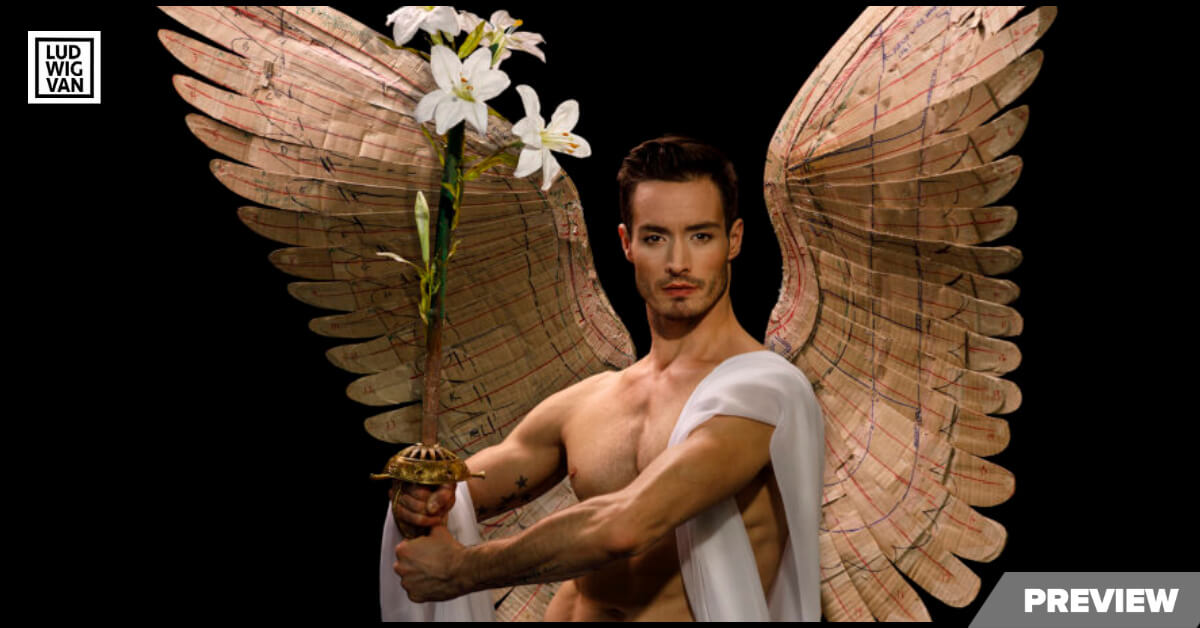
Opera Atelier/Handel’s The Resurrection, streaming May 27 to June 10. Tickets available online.
It had long been the dream of Opera Atelier to do a full staging in Toronto of Handel’s early oratorio masterpiece La Resurrezione. Director Marshall Pynkoski and choreographer Jeannette Lajeunesse Zingg had staged the oratorio in Halle, Germany, Handel’s birthplace, in 1995, for conductor Marc Minkowski, which was followed by a semi-staging at the Jane Mallett Theatre in Toronto in 1999. Now, finally, the company’s lavish production was slated to make its debut for Easter, 2020 at Koerner Hall.
On March 6, the company sent out, to all relevant personnel, the Toronto Public Health guidelines designed to prevent the spread of COVID-19, prior to rehearsals beginning on March 9 at the Elgin Theatre rehearsal hall. A few days later, the rehearsals were forced to go on hiatus, as Ontario worked out its COVID response, which turned out to be the first lockdown. In the last week of March, 2020, Opera Atelier’s The Resurrection (OA uses the English title) was officially cancelled.
“It was heartbreaking,” says Pynkoski. “The set was built, the costumes were three-quarters made, and we were just into rehearsals, when without any warning, we were told we had to shut down.”
Through the roller coaster of 2020’s lockdowns and phased openings, and lockdowns again, the company did manage to cobble together the original production Something Rich & Strange, which linked diverse baroque songs and instrumental pieces that dealt with the world of dreams, and which they presented as a digital capture of a Koerner Hall stage production in December 2020. This meant they had to work through all the obstacles that a COVID pandemic could throw their way, but, in turn, pulling off Something Rich & Strange led to reigniting the hope of The Resurrection.
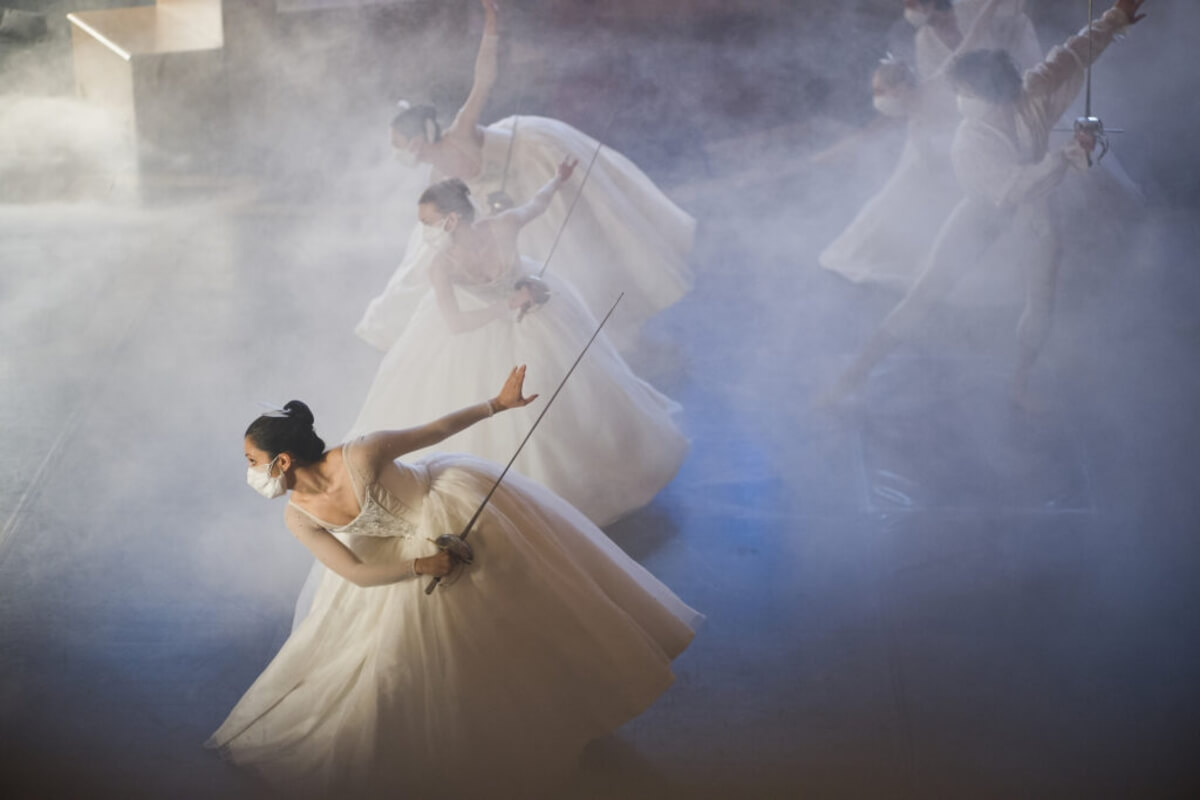
Making a movie of ‘The Resurrection’ — the only way to go
No matter how difficult the making of Something Rich & Strange had been, the climate in 2021 was much more restrictive in terms of government rules. Mounting The Resurrection as a theatre production, even a digital one, was a near impossibility, and yet the film industry was working non-stop. Thus, in the minds of Pynkoski and Zingg, there was a pivot to the idea of turning The Resurrection into a film, even though this meant completely restaging and re-choreographing the entire show for the camera.
As Zingg says, “Stage action is usually frontal — directed towards the audience — but for the camera, it is creating patterns in all directions, while at all times, observing social distancing.” It also meant a compromised stage set by designer Gerard Gauci, who now wanted to incorporate the beauty of the St. Lawrence Hall’s grand ballroom (the Great Hall) into the production, which also changed the lighting dynamic.
Many people in the arts and related fields, myself included, had always wondered why movies and TV shows were allowed to shoot continuously throughout the entire pandemic. I, like everyone else, had assumed money was a factor, because the film industry brings in big bucks; hence, greedy governments being hypocritical.
Pynkoski and Zingg, however, decided to investigate this phenomenon. “We asked ourselves, what do movie companies know that we don’t?” recalls Pynkoski. By placing some well-chosen phone calls to various politicos and union officials, they found out why film shoots were allowed to function. It was certainly an eye-opener to them, and subsequently, to me.
What they discovered was that the film industry had developed the gold standard of safety, with every shoot meeting the most stringent of rules. In order to make their movie, OA was going to have to get on the gold standard.
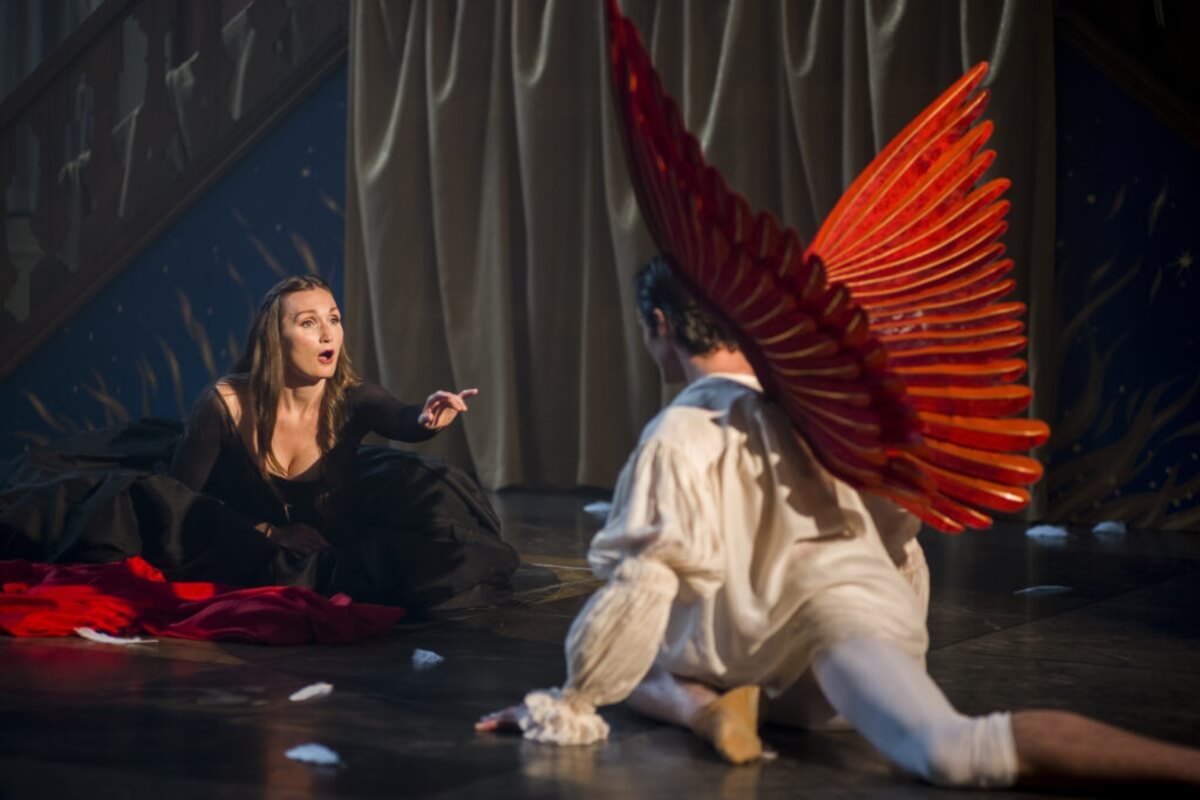
The constant shifts of planning
With everyone signed to a second contract, the first day of rehearsals was scheduled for Feb. 22, 2021, which also accounted for the out-of-country folk spending two weeks in quarantine. With the lockdown extended, however, the new rehearsal date was pushed back to March 21. Right from the beginning, it was decided that the Tafelmusik orchestra and singers would be pre-recorded, and lip syncing would occur during rehearsals and filming, which conformed to ACTRA policy — that being the TV and movie union. OA is used to working with Actors’ Equity, the theatrical union, so it was, admittedly, a learning curve to deal with ACTRA.
The first thing that happened when the company came together in March was the audio recordings at Koerner Hall, conducted by David Fallis, which included the mandated plexiglass dividers. This turned out to be a blessing when all performing arts venues were closed shortly thereafter, and Koerner Hall became off limits. Each singer was given a copy of their music so they could rehearse in front of a mirror to perfect the lip sync.
The company had already decided to rehearse at OA’s own studio in the St. Lawrence Hall, deeming it to be the safest possible place because they could control all conditions. In terms of filming, their Plan B was to use the grand ballroom at the St. Lawrence Hall in case they lost Koerner Hall. The first official day of rehearsals was now Apr. 6.
Then calamity struck. On Apr. 7 came another provincial stay-at-home order, but this was followed by good news. The company received confirmation from the City of Toronto that they were allowed to continue to rehearse and film at the St. Lawrence Hall, while operating under strict COVID-19 guidelines. In the eyes of the rule-makers, Opera Atelier had achieved the gold standard.
As a side note, Zingg figures there were at least fifty different schedule changes during the making of The Resurrection. She also remembers that every day, when they weren’t choreographing or directing, one or other of them was on the phone with some city official, or union apparatchik, or board member, asking or answering questions.
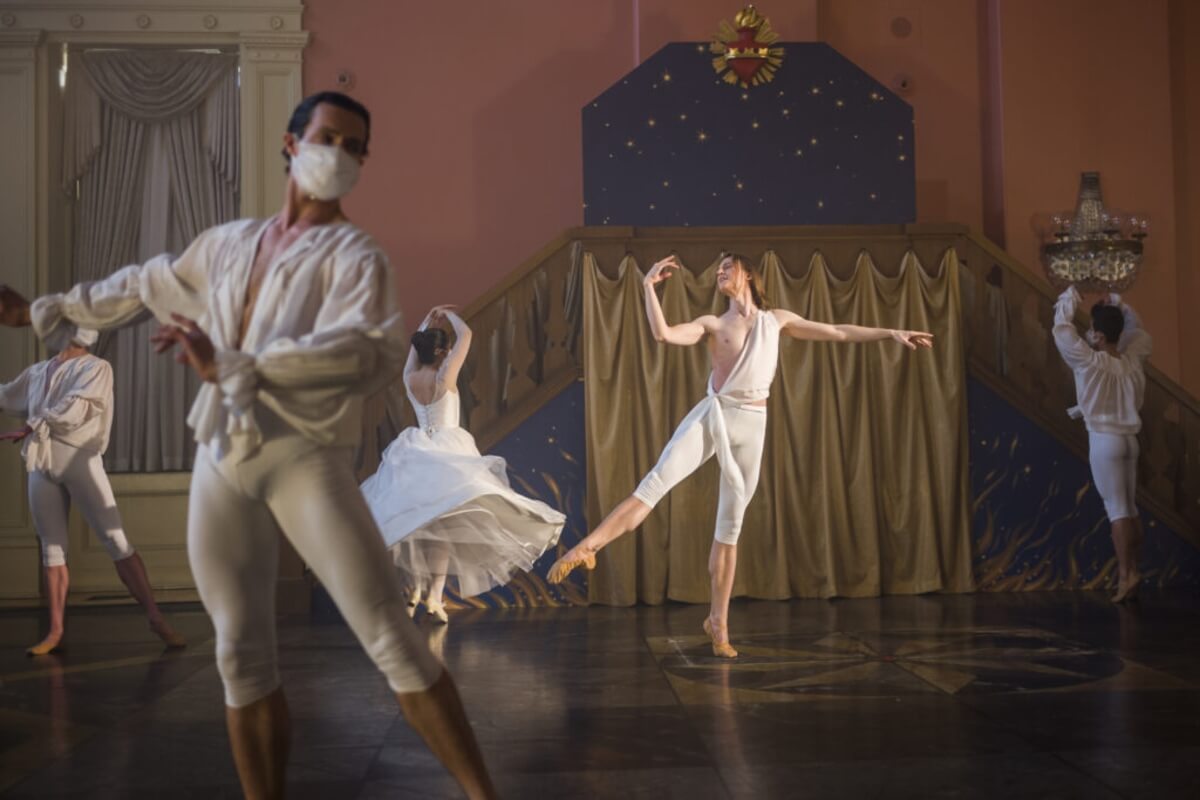
Safety first
So just what is involved in the gold standard of filmmaking?
Back in September, 2020, OA had hired an Infection Control Coordinator to consult on how to manage rehearsals, performances, and internal infection control during the making of Something Rich & Strange. Through this consultation, the company developed a COVID-19 Workplace Policy which included the hiring of an Infection Control Monitor to manage infection control on a daily basis, both during rehearsals and filming. The chief job of this monitor was maintaining compliance to OA’s COVID-19 Workplace Policy, as well as keeping up to date with all provincial and municipal guidelines as they developed. For The Resurrection, the company once again employed an Infection Control Monitor.
Here is a laundry list of the rules and regulations that the company instituted during the rehearsals and filming of The Resurrection.
- The hotels where the out of towners stayed were within walking distance of the St. Lawrence Hall. They were also tested both before and after quarantine.
- To avoid public transit, the company covered the cost of taxis, Ubers, parking and mileage for those who lived too far to walk.
- PPE included mandatory masks, and face shields or eye goggles. Social distancing had to be observed at all times.
- Twice weekly COVID PCR tests were implemented during rehearsals. Daily tests were conducted during filming.
- The Infection Control Monitor ensured that only one person was on the elevator or the staircase at a time.
- According to union rules, no singing was ever allowed in rehearsal.
- Each artist did their own hair and makeup, which was déja vu to Pynkoski and Zingg, harkening back to the mean, lean early days of the company 35 years ago.
- These rules were also followed by back stage personnel, and the nine-member camera crew.
There were also more subtle events that occurred. At the very beginning, the company allowed people to drop out of the production if they had any concerns. In fact, two pregnant dancers left, as did someone with an 82-year-old mother-in-law at home.
Pynkoski and Zingg, along with film director Marcel Canzona, broke down The Resurrection into 25 scenes for shooting purposes, and then asked the company if they were comfortable in each scene. For the five lead singers, there was no problem, but some dancers had difficulty with certain scenes, such as, they were too close to each other, and adjustments were made. In fact, several dancers opted to keep their masks on during the filming and this was allowed.
And how much extra did this gold standard cost? “$125,000,” responds Pynkoski, who also points out, with some degree of irony, that vaccinations never figured into the mix. “The only thing of concern,” he says, “was safety protocols.”
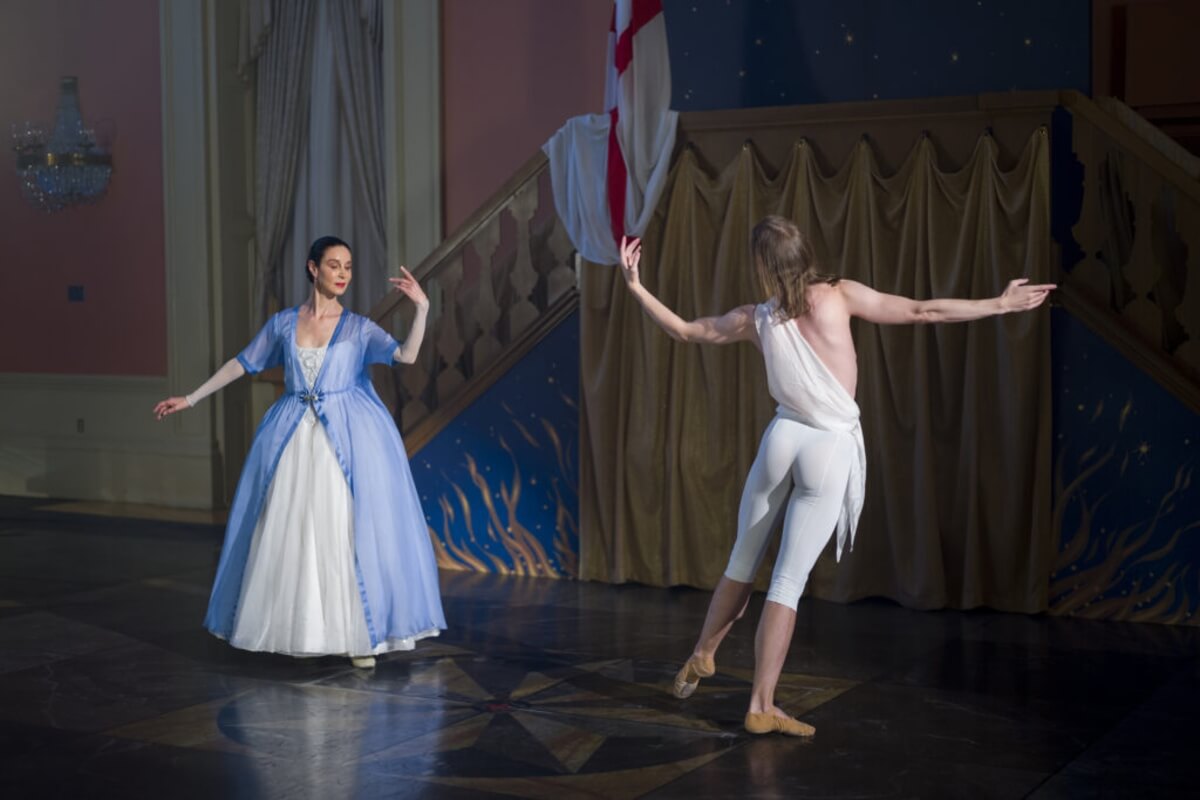
So what happened when the masks came off?
“It was thrilling,” declares Pynkoski. “None of the cast had seen each other’s face during the whole rehearsal period. Now that we were filming, they saw each other, and it became very emotional. The Resurrection is a very emotional piece anyway, and even though social distancing was observed, it was exciting to see how they found each other.”
Pynkoski goes on to say that Opera Atelier really assembled a dream cast for The Resurrection who were willing to make their voices suit the text, to make the sound ugly, or put out a sob, for example. “They were real people in their roles,” he says, “not just singing machines.”
And a word about ‘The Resurrection’
Handel had only been in Italy two years before he was commissioned by Marchese Francesco Ruspoli to create a work for Easter. The composer was just 23-years-old. The work was first performed on Easter Sunday 1708, at the Ruspoli’s Rome palazzo. Carlo Capece’s libretto is very specific, dealing only with the events between Good Friday and Easter Sunday. Recitatives carry forward the action, while the arias detail character and mood.
There are two parallel worlds featured in this liturgical oratorio. One showcases Lucifer (bass-baritone Douglas Williams) and an Angel (soprano Carla Huhtanen), the former taking credit for Christ’s death, the latter arguing that Good won over Evil, because Christ will be resurrected. The real-world deals with Mary Magdalene (soprano Meghan Lindsay) and Mary Cleophas (mezzo-soprano Allyson McHardy) mourning Jesus’ death, while St. John the Evangelist (tenor Colin Ainsworth) assures them that the resurrection will happen.
It is universally acknowledged that this very early work is a masterpiece, containing all the dramatic and melodic elements that Handel would infuse in his 40 Italian operas still to come. Not only that, the vocal demands are intense, particularly for the Angel, as are some of the instrumental passages, especially for the viola da gamba. Zingg says the music is a joy to dance, and, in terms of storytelling, her dancers are a band of angels who help the Angel to defeat Lucifer. On a historical note, the first violinist and conductor for this debut performance was Arcangelo Corelli who would go to fame as a great composer in his own right.
There is an interesting bit of trivia connected to this first performance. An actual soprano, Margherita Durastanti, sang the role of Mary Magdalene, which did not please the Pope as women were forbidden to perform on stage in Vatican City by papal edict. For all subsequent performances, the soprano was replaced by a castrato. Durastanti did get her just desserts, however, when she was cast in the lead role of Handel’s opera Agrippina, which debuted during the Venice Carnevale in 1709.
For Ainsworth, this production is coming full circle. The tenor made his professional debut as St. John the Evangelist in the 1999 Jane Mallett performance.
Final thoughts
When OA received its 2020 government grants, like all the other Toronto performing arts companies, they had to make a decision. In light of COVID, do they produce or not? According to Pynkoski, it was no contest. The company would spend the money on productions.
“Artists want to work,” he explains. “We want to sing and dance. It’s not about a pay cheque. Art is a part of who we are. We rise to the challenge of doing work in difficult conditions.”
#LUDWIGVAN
Get the daily arts news straight to your inbox.
Sign up for the Ludwig van Daily — classical music and opera in five minutes or less HERE.
- INTERVIEW | Actor Diego Matamoros Takes On Icon Walt Disney In Soulpepper Production Of Hnath Play - April 16, 2024
- SCRUTINY | Opera In Concert Shine A Light On Verdi’s Seldom Heard La Battaglia Di Legnano - April 9, 2024
- SCRUTINY | Lepage & Côté’s Hamlet Dazzles With Dance And Stagecraft Without Saying Anything New - April 5, 2024



